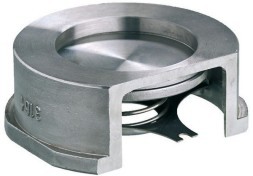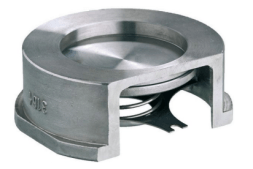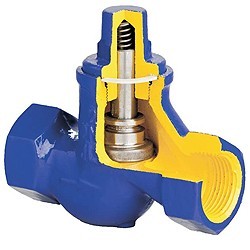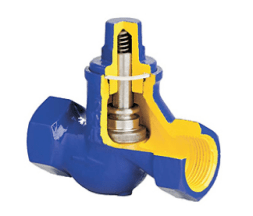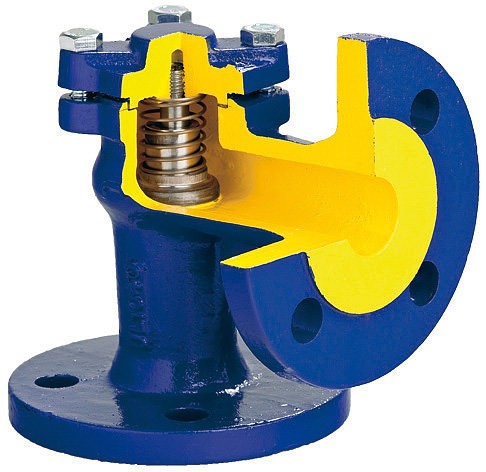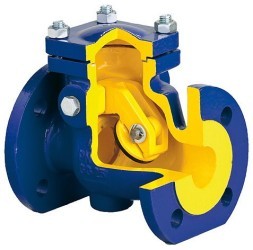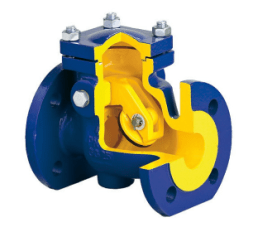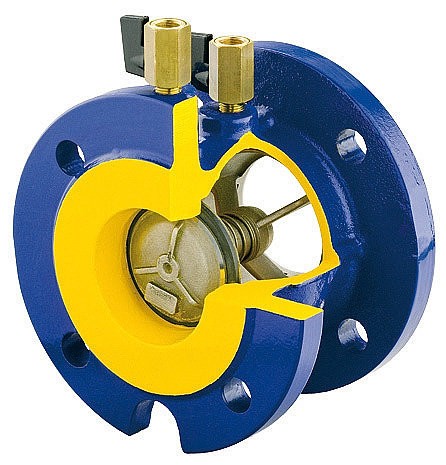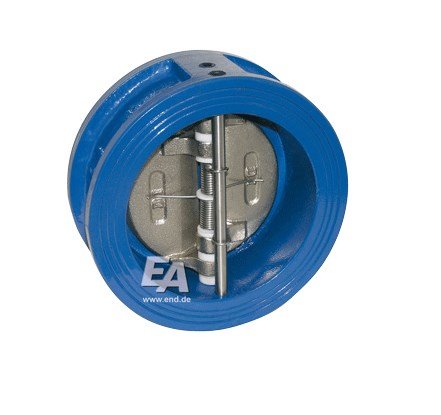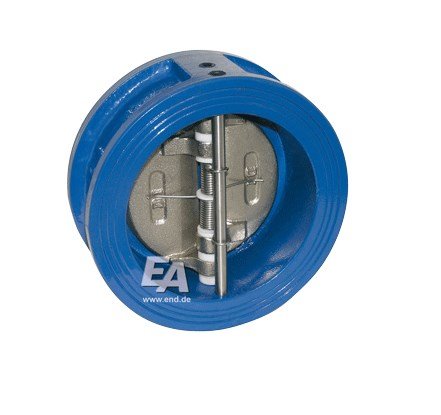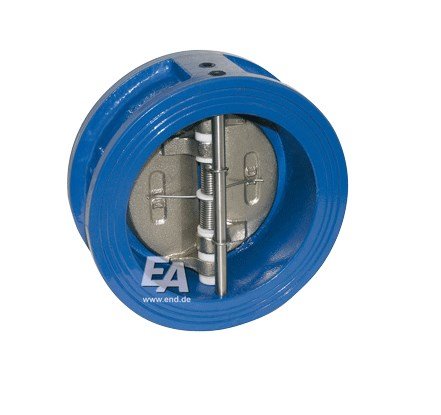Check valves
Check valves
Stainless check valves are protective equipment of the pipeline network, which prevents the possibility of changing the working environment in the opposite direction.
This check valve is made of high-quality heat-resistant molten stainless steel AISI 316 and can withstand a temperature range from -30 to +250. In the manufacture of BCX-08 valves, the method of precision casting is used.
The stainless check valve is used for aggressive liquids and gases that are neutral to the valve parts.
Purpose of the check valve
The check valve is designed to freely allow the flow of working fluid in one direction and block it in the opposite direction. As a locking element in these valves, a ball or cone gate is used, interacting with the seat, so that there is no leakage of liquid.
It is recommended to install a check valve:
- after the submersible pump in the well or borehole;
- on the water supply;
- After the water meter;
- in front of the water heater;
- to the main sewer line;
- in front of each plumbing appliance;
- in autonomous heating systems with several separate circuits, inside which the coolant has different pressures.
A check valve is a type of protective pipe fitting designed to prevent a change in the flow direction of the medium in the process system. Check valves allow the medium to flow in one direction and prevent it from moving in the opposite direction, while acting automatically and being a direct-acting valve (along with safety valves and direct-acting pressure regulators).
Check valves with various shut-off and control elements are used, for example, in the form of a ball or cone. Check valves can also be classified according to several criteria: by design, by the material of the body and internal parts, by connection, by overall dimensions.
- Ball check valves.
- Rotary check valves (sometimes called lifting valves)
- Lifting (spring) check valve
- Double-leaf check valve
- The disc check valve is flanged
- nominal diameter (DN) is the size of the through hole;
- nominal pressure (PN) is the maximum pressure level at which the device can be operated for a long time and safely;
- diameter of the landing part;
- throughput indicators;
- requirements for the tightness class;
- type of connection;
- the operating temperature range.
- Connection type
The shut-off element of this valve is a ball, which is pressed against the seat by a spring (Fig. 1). This design is reliable and is mainly used on small pipeline diameters in housing and communal services.
The shut-off element of the rotary check valve is made in the form of a hinged flap (Fig. 2). When the medium is flowing in a given direction, the flap is in the open state, passing the flow. When the medium flows in the opposite direction, the flap closes, "sits" on the saddle and blocks the duct.
The advantage of rotary check valves is their low sensitivity to environmental pollution and their ability to function in large systems. These devices are widely used in heating systems in housing and communal services.
The design of lifting check valves is similar to a shut-off valve (Fig.3) Only the spring-loaded gate is opened not manually, but under the pressure of the medium flow. That is, under the influence of the pressure of the medium, the gate rises, passing the flow, and when the pressure drops, it falls onto the seat, preventing the flow from returning.
Lifting valves can only be installed on horizontal sections of pipelines, observing the vertical position of the valve axis.
The advantages of the non-return lifting valve are: maintainability without complete disassembly, ensuring tightness of the seat/gate and the possibility of application in various industries. The disadvantage is the sensitivity to environmental pollution, which can lead to jamming of the valve.
The shut-off element of a double-leaf check valve consists of two flaps mounted on an axis that is located in the center of the flow section. When the flow passes in a given direction, the valve is in the open state, the flaps are folded (Fig. 4), when the flow of the medium stops, the flaps are straightened and closed.
Double-leaf valves are subject to large pressure losses and are not used for contaminated (with coarse inclusions) media. The advantage of these devices is the possibility of their application to various complex environments (for example, seawater, petroleum products, etc.) by selecting the material of the disk seal.
The locking element of the disc check valve is a flat disc (Fig.5), which is connected to a spring-loaded rod. In the working position, the disc is squeezed out under the pressure of the medium, providing a free flow, and when the pressure decreases, it is pressed against the seat by the action of a spring, blocking the flow hole.
The small size and weight of the check flanged valves make it easy and simple to install them between the flanges in any position.
There are various modifications of the valve according to the body material, disk seal, etc., which allow it to be used in various industries, but not for viscous media and liquids with inclusions of solid and fibrous materials.
The importance of the function of these devices lies in the fact that they perform their task both in normal operation, for example, in the case of combining pressure lines of several pumps into one, one or more check valves are installed on each of them to protect against the pressure of the working pump of the others, and in emergency situations, for example, in case of an emergency pressure drop on in one of the sections of the pipeline, pressure is maintained on adjacent sections, which can lead to the formation of a reverse flow of the medium, which is unacceptable for the normal operation of the system and dangerous for its equipment.
The main types of check valves are check valves and check valves themselves, their main difference is in the design of the gate (an element that blocks the flow of the medium when sitting in the saddle), in the first it is performed in the form of a spool, in the second — in the form of a round disk, which is often called a flap.
Management and technical specifications
The main technical characteristics of check valves include:
The valves can be connected to the water supply system in several ways:
- flanged — flanges with O-rings are used for fastening to pipelines;
- coupling — fastening to pipes of small diameter occurs through a threaded coupling;
- flanged — the valve does not have its own fastening unit, it is fixed with the help of flanges located at the ends of the pipes;
- for welding — the device is attached to the pipe section by welding.
HOW TO CHOOSE A CHECK VALVE: SOME USEFUL TIPS
Each system has its own nuances, but there are enough valve modifications developed to make the most accurate choice, taking into account the technical characteristics and design features of the valve.
In systems with clean water, even simple mechanisms with a sphere shutter or a disk on a spring will last for more than one year.
In polluted environments, in heating systems with metal piping, models with a rotary shutter perform better.

